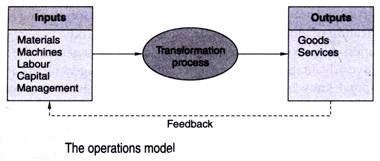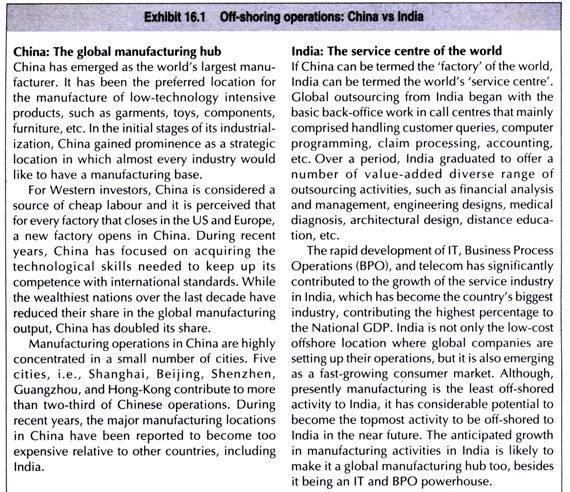Global Operations
01/04/2020Traditionally ‘production’ or ‘manufacturing’ management has been used to imply production of physical goods, which are tangible in nature, such as automobiles, computers, televisions, camera, furniture, equipment, etc. During recent decades, ‘services’ that are ‘intangible’ in nature but also satisfy needs of a customer have grown rapidly.
Service providers like educational institutes, banks, insurance companies, amusement parks, etc., form a part of services.
A combination of goods and services may also form a product. For instance, meals served in a restaurant comprise both the tangible physical core product and intangible services aspects, such as cleanliness, ambience, delivery, etc.
Operations management refers to planning, organizing, and controlling all resources and activities to provide goods and services, which applies equally to manufacturing and services in the private and public sectors and even governments.
Operations management refers to the process which transforms inputs such as materials, machines, labour, capital and management, into outputs (i.e., goods and services).


The transformation process in ‘operations’ can have different forms, such as:
Globalization of Operations Management
The forces of globalization, such as reduction in trade barriers, cheaper and easier means of international transportation and communication, wage differential, and market saturation in the home markets on one hand and rapidly growing marketing opportunities overseas, especially in emerging economies on the other, have led to expansion of operations on a global scale.
Globalization of operations includes:
- Global sourcing of inputs
- Global production of goods and services
- Global transportation of products
- Global management of entire supply chain
An MNE headquartered in New York, New Delhi, or London may have production operations in a few countries and warehousing and marketing across the world.
For instance, Exxon Mobil, the world’s largest integrated oil company has its upstream drilling activities in about 50 countries; Siemens, the leading manufacturer of high technology industrial and consumer equipment, operates in over 190 countries with about 500,000 employees, and Boeing, the world’s largest manufacturer of commercial aircraft has operations in 26 countries with customers in over 100 countries.
Off-shoring
Relocation of business processes to a low-cost location by shifting the task overseas is termed as ‘off-shoring’. Capital assets may be shifted to a new production location by relocating the business processes to a new country within the company or by being sold to others.
Such assets include business processes, such as production, manufacturing, or services from high-cost locations (for example, the US or Europe) to low-cost locations, such as India, China, or Latin America. With digitization, the Internet, and high-speed data networks as the driving forces, all kinds of knowledge related work can now be performed almost anywhere in the world.
Activities which are particularly suitable for off-shore sourcing are discussed as follows:
(i) Products at the maturity stage of their product life cycle where technology has become standardized and widespread, requiring long-production runs making labour costs crucial to achieve competitiveness, are suited for off-shoring.
(ii) In case of technology: and capital-intensive industries, such as electronics, telecommunication, and software, certain parts of the production process are labour-intensive and need to be off-shored to low-cost locations.
Relocating the business processes for quality reasons at higher costs to another country are not considered off-shoring, for instance, shifting a costume-design centre from an East European or a South Asian country to Italy or France.
China and India, besides other developing countries, have become the most sought after off-shoring locations. Exhibit 16.1 illustrates the emergence of China as a global manufacturing hub, primarily due to low-cost large-scale production facilities whereas India, as a result of abundance of highly-skilled and knowledge-intensive manpower, has become the virtual, service centre for the world.

Types of off-shoring
(i) Captive off-shoring
Relocating business processes to a low-cost location and delivering from a shared service centre owned by the company itself is known as captive off-shoring.
(ii) Third party off-shoring
Also known as outsourcing, third party off-shoring involves relocation of business process from within the client country to an outside vendor operating at low-cost location. For the client company, the ‘outsourced’ services are performed by the outside vendor.
(iii) Near-Shoring
Relocation of a business process to a country within the same geographical region is referred to as near-shoring. For instance, shifting business processes from the US to Mexico or from Western to Eastern Europe.
[…] VIEW […]